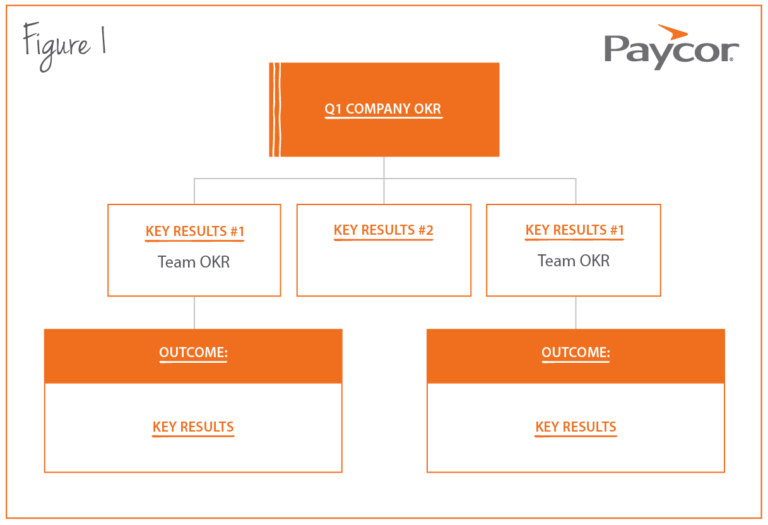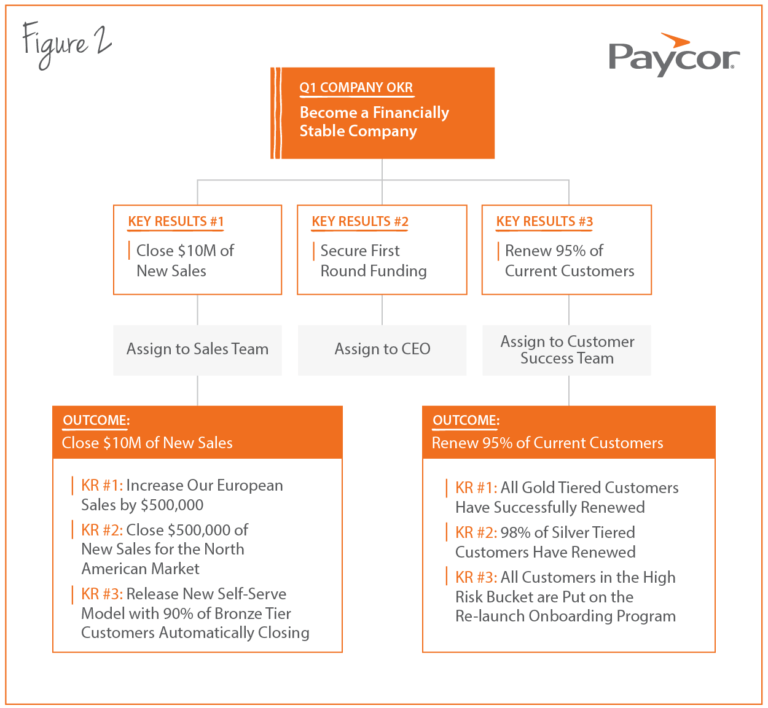Establishing companywide objectives can be a time-consuming and challenging project. But it doesn’t have to be. Check out this article for best practices on converting company OKRs into team outcomes.
For those that opt to use the Objectives and Key Results (OKRs) methodology, strong alignment and focus on company level objectives cascading to an individual level is the reason OKRs have been effective.
Company OKRs are derived from both a company’s vision and core values. The challenge here, is for the leadership team to be able to convert company level OKRs, both quarterly or annually, into team outcomes. With this in mind, stretch goals are broken down into company level OKRs and then into quarterly objectives for various departments. When company level OKRs are shared with the entire company, the goal is for teams and individuals to be able to come up with objectives that align with the company’s core OKRs and ultimate stretch goal.
How Can Company OKRs be Converted into Team Outcomes?
There are two general steppingstones for teams and/or departments that are looking to set OKRs and align them with the company. The conversion of company OKRs to team outcomes come in the following forms:
- Conversion of company level key results (KR) into team/department outcomes
- Creating team objectives without directly linking them to company level OKRs
Now let’s take a step back and look at the components that make an OKR:
- The outcome: End result of an objective
- The key result: How an objective’s success is measured (can be both qualitative/quantitative)
Key results are then delegated as an outcome to a team or department. In most cases, this is where managers or team leaders take ownership of team outcomes that align with company outcomes. Having a clear understanding of team outcomes are dependent on any respective team’s strategy to track and measure success in their team key results.

Figure 2 is a specific example of how converting company level OKRs into team outcomes may occur. In this case, the company OKR is to “Become financially stable” in the first quarter. The key results and measure to success of this company OKR is as follows:
- Close $10 million of new sales
- Secure first round of VC funding
- Renew 95% of current customers

As we can see, the respective key results of the company OKR are delegated according to areas of responsibility. In this case, they are assigned to the sales and customer success teams.
The sales team outcome in this case is to “Close $10 million of new sales” in the first quarter. Having the company OKR converted to this team outcome allows the sales team to determine their own metrics of success when it comes to reaching this goal.
The metrics of success for the sales team outcome is what gets converted into key results, and likewise for the customer success team. On the next level, individual outcomes can be determined depending on size of the company.
For instance, in a larger company, there may be designated regional sales managers that will take on a portion of the “Close $10 million of new sale” departmental outcome. In a smaller team, this may mean a single sales representative takes on this responsibility.
How Paycor Helps
Paycor helps companies elevate performance by combining OKR goal tracking with peer feedback, 1-on-1 coaching recognition and modern performance reviews.









